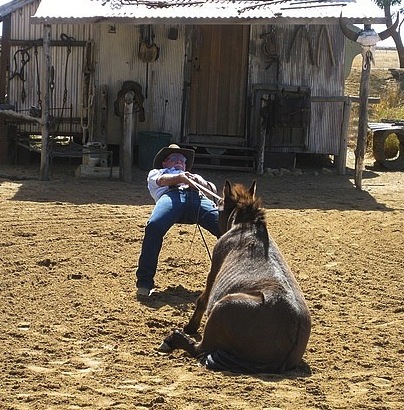Archive for April, 2013
What They Didn’t Teach Me in Engineering School
 The technical stuff is the easy part. Technical systems respond predictably, but people don’t.
The technical stuff is the easy part. Technical systems respond predictably, but people don’t.
There’s nothing worse than solving the wrong problem, so before you start solving you’ve better done a whole lot of defining.
There is no exact answer; engineering is all about judgment.
Organizational structure is important. Whatever the structure, see its strengths and make them work for you. If you try to fight it, it will eat you.
Innovation isn’t about ideas, innovation is about commercializing ideas.
Engineering analysis can win minds, but not hearts. And hearts govern minds.
The engineer’s role is not to minimize risk; it’s to understand the commercial reward and take risk accordingly.
What people believe is far more powerful than what they think.
New technology threatens status quoers, and, in turn, they block it.
There is no problem unless someone important thinks there’s one.
All technical systems are really human systems masquerading as technical systems.
If you let it, fear dominates. Be afraid and do it anyway. But along the way, keep in mind that others are too afraid to try.
Engineering is not sane and rational; engineering is about people.
Starvation, Pressure, and Perspective Shift
I like Dave Snowden’s thinking on innovation – starvation, pressure, and perspective shift. Here’s what it means to me:
Starvation – Left to our own, we’ll do as we did before. Starvation of resources pushes thinking away from stale, worn paths. Almost in reverse, define what you don’t want, then construct intelligent constraints (the most difficult part of the whole deal) so it’s out of the design space. Constrain the team so they can’t use the most expensive material; constrain the team so they can’t use the same old technology; constrain them so they can’t use the tried and true business model. It’s reverse thinking, but constraints – telling them what they can’t do – frees up design space. Constraints say “Do anything you want, except this.” which constrains far less than specifications. Constrain them to free them.
Pressure – Left to our own, we’ll reuse old thinking. Time pressure drags thinking out of the ruts of our success. Define creative constraints then, to create pressure, give the team insufficient time to think it through. Force them to swim differently with the problem. The best way I know is to explain the constraints then give the team fifteen minutes to build a prototype. (Yes, fifteen.) The prototype is non-functional, and can be made from whatever is on hand – cardboard, clay, duct tape, or packing peanuts. The short time frame creates pressure, and the pressure extrudes different thinking. Building a prototype shifts from learning-in-the-brain to learning-with-the-hands. And since hands learn differently than brains, new thinking is cast.
Perspective Shift – Left to our own, we’ll do a remake. Perspective shift moves us to a different place to create a healthy disrespect for today’s thinking. Seen in the right new light, our successes should look problematic. (From the front a skunk isn’t so bad, but from behind things aren’t so good.) Building a bridge to a new perspective can shift things a little, but for a tectonic shift, formalize the consequences of inaction. Think – “If we don’t do this, a very bad thing will happen.” Perspective shift is all about creating action in a new direction.
You won’t get it right the first time, but, no matter. The real enemy is inaction.
Own The Behavior
 The system is big and complex and its output is outside your control. Trying to control these outputs is a depressing proposition, yet we’re routinely judged (and judge ourselves) on outputs. I think it’s better to focus on system inputs, specifically your inputs to the system.
The system is big and complex and its output is outside your control. Trying to control these outputs is a depressing proposition, yet we’re routinely judged (and judge ourselves) on outputs. I think it’s better to focus on system inputs, specifically your inputs to the system.
When the system responds with outputs different than desired, don’t get upset. It’s nothing personal. The system is just doing its job. It digests a smorgasbord of inputs from many agents just like you and does what it does. Certainly it’s alive, but it doesn’t know you. And certainly it doesn’t respond differently because you’re the one providing input. The system doesn’t take its output personally, and neither should you.
When the system’s output is not helpful, instead of feeling badly about yourself, shift your focus from system output to the input you provide it. (Remember, that’s all you have control over.) Did you do what you said you’d do? Were you generous? We’re you thoughtful? We’re you insightful? Did you give it your all or did you hold back? If you’re happy with the answers you should feel happy with yourself. Your input, your behavior, was just as it was supposed to be. Now is a good time to fall back on the insightful grade school mantra, “You get what you get, and you don’t get upset.”
If your input was not what you wanted, then it’s time to look inside and ask yourself why. At times like these it’s easy to blame others and outside factors for our behavior. But at times like these we must own the input, we must own the behavior. Now, owning the behavior doesn’t mean we’ll behave the same way going forward, it just means we own it. In order to improve our future inputs we’ve got to understand why we behaved as we did, and the first step to better future inputs is owning our past behavior.
Now, replace “system” with “person”, and the argument is the same. You are responsible for your input to the person, and they are responsible for their output (their response). When someone’s output is nonlinear and offensive, you’re not responsible for it, they are. Were you kind? Thoughtful? Insightful? If yes, you get what you get, and you don’t get upset. But what if you weren’t? Shouldn’t you feel responsible for their response? In a word, no. You should feel badly about your input – your behavior – and you should apologize. But their output is about them. They, like the system, responded the way they chose. If you want to be critical, be critical of your behavior. Look deeply at why you behaved as you did, and decide how you want to change it. Taking responsibility for their response gets in the way of taking responsibility for your behavior.
With complex systems, by definition it’s impossible to predict their output. (That’s why they’re called complex.) And the only way to understand them is to perturb them with your input and look for patterns in their responses. What that means is your inputs are well intended and ill informed. This is an especially challenging situation for those of us that have been conditioned (or born with the condition) to mis-take responsibility for system outputs. Taking responsibility for unpredictable system outputs is guaranteed frustration and loss of self-esteem. And it’s guaranteed to reduce the quality of your input over time.
When working with new systems in new ways, it’s especially important to take responsibility for your inputs at the expense of taking responsibility for unknowable system outputs. With innovation, we must spend a little and learn a lot. We must figure out how to perturb the system with our inputs and intelligently sift its outputs for patterns of understanding. The only way to do it is to fearlessly take responsibility for our inputs and fearless let the system take responsibility for its output.
We must courageously engineer and own our behavioral plan of attack, and modify it as we learn. And we must learn to let the system be responsible for its own behavior.
A Healthy Dissatisfaction With Success
 They say job satisfaction is important for productivity and quality. The thinking goes something like this: A happy worker is a productive one, and a satisfied worker does good work. This may be true, but it’s not always the best way.
They say job satisfaction is important for productivity and quality. The thinking goes something like this: A happy worker is a productive one, and a satisfied worker does good work. This may be true, but it’s not always the best way.
I think we may be better served by a therapeutic dose of job dissatisfaction. Though there are many strains of job satisfaction, the most beneficial one spawns from a healthy dissatisfaction with our success. The tell-tale symptom of dissatisfaction is loneliness, and the invasive bacterium is misunderstanding. When the disease is progressing well, people feel lonely because they’re misunderstood.
Recycled ideas are well understood; company dogma is well understood; ideas that have created success are well understood. In order to be misunderstood, there must be new ideas, ideas that are different. Different ideas don’t fit existing diagnoses and create misunderstanding which festers into loneliness. In contrast, when groupthink is the disease there is no loneliness because there are no new ideas.
For those that believe last year’s ideas are good enough, different ideas are not to be celebrated. But for those that believe otherwise, new ideas are vital, different is to be celebrated, and loneliness is an important precursor to innovation.
Yes, new ideas can grow misunderstanding, but misunderstanding on its own cannot grow loneliness. Loneliness is fueled by caring, and without it the helpful strain of loneliness cannot grow. Caring for a better future, caring for company longevity, caring for a better way – each can create the conditions for loneliness to grow.
When loneliness is the symptom, the prognosis is good. The loneliness means the organization has new ideas; it means the ideas are so good people are willing to endure personal suffering to make them a reality; and, most importantly, it means people care deeply about the company and its long term success.
I urge you to keep your eye out for the markers that define the helpful strain of loneliness. And when you spot it, I hope you will care enough to dig in a little. I urge you think of this loneliness as the genes of a potentially game-changing idea. When ideas are powerful enough to grow loneliness, they’re powerful enough to move from evolutionary into revolutionary.

 Mike Shipulski
Mike Shipulski